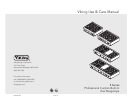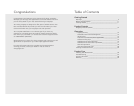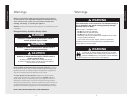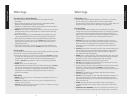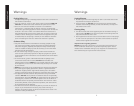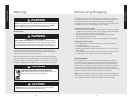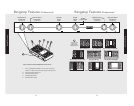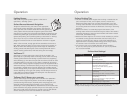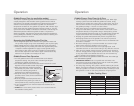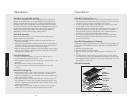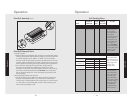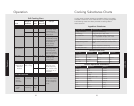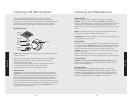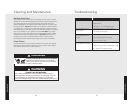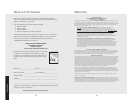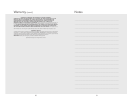
9
Heating Elements
• Burners may be hot even though they are dark in color. Areas near burners
may become hot enough to cause burns.
•
During and after use, DO NOT touch or let clothing or other flammable
materials contact heating elements, or areas near elements, until they have
had sufficient time to cool.
Cleaning Safety
• Turn off all controls and wait for appliance parts to cool before touching or
cleaning them. DO NOT touch the burner grates or surrounding areas until
they have had sufficient time to cool.
• Clean appliance with caution. Use care to avoid steam burns if a wet sponge
or cloth is used to wipe spills on a hot surface. Some cleaners can produce
noxious fumes if applied to a hot surface.
Important notice regarding pet birds:
NEVER keep pet birds in the kitchen or in rooms where the fumes from the
kitchen could reach. Birds have a very sensitive respiratory system. Fumes
released due to overheated cooking oil, fat, margarine and overheated non-
stick cookware may be may be harmful or fatal to birds.
Getting Started
Warnings
8
Cooking Safety
(cont.)
damaged during cooking, immediately discard the food and its container. The
food could be contaminated
.
• If you are “flaming” liquor or other spirits under an exhaust, TURN THE
FAN OFF. The draft could cause the flames to spread out of control.
• Once the unit has been installed as outlined in the
Installation
Instructions
, it is important that the fresh air supply is not obstructed.
The use of a gas cooking appliance results in the production of heat and
moisture in the room in which it is installed. Ensure that the kitchen is
well-ventilated. Keep natural venting holes open or install a mechanical
ventilation device. Prolonged or intensive use of the appliance may call
for additional (such as opening a window) or more effective ventilation
(such as increasing the level of a mechanical ventilation if present).
Cookware Safety
• Use pans with flat bottoms and handles that are easily grasped and stay
cool. Avoid using unstable, warped, easily tipped or loose-handled pans.
Also avoid using pans, especially small pans, with heavy handles as they
could be unstable and easily tip. Pans that are heavy to move when filled
with food may also be hazardous.
• Be sure utensil is large enough to properly contain food and avoid boil
overs. Pan size is particularly important in deep fat frying. Be sure pan will
accommodate the volume of food that is to be added as well as the bubble
action of fat.
• To minimize burns, ignition of flammable materials and spillage due to
unintentional contact with the utensil, DO NOT extend handles over
adjacent surface burners. ALWAYS turn pan handles toward the side or back
of the appliance, not out into the room where they are easily hit or reached
by small children.
• NEVER let a pan boil dry as this could damage the utensil and the appliance.
• Only certain types of glass, glass/ceramic, ceramic or glazed utensils are
suitable for rangetop surface usage without breaking due to the sudden
change in temperature. Follow manufacturer's instructions when using glass.
• This appliance has been tested for safe performance using conventional
cookware. DO NOT use any devices or accessories that are not specifically
recommended in this guide. DO NOT use eyelid covers for the surface units,
stovetop grills, or add-on oven convection systems. The use of devices or
accessories that are not expressly recommended in this manual can create
serious safety hazards, result in performance problems, and reduce the life
of the components of the appliance.
• The flame of the burner should be adjusted to just cover the bottom of
the pan or pot. Excessive burner setting may cause scorching of
adjacent countertop surfaces, as well as the outside of the utensil. This
is based on safety considerations.
Getting Started
Warnings



